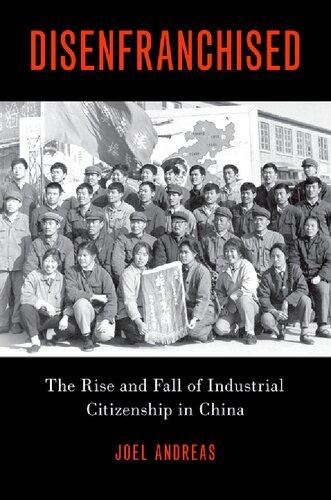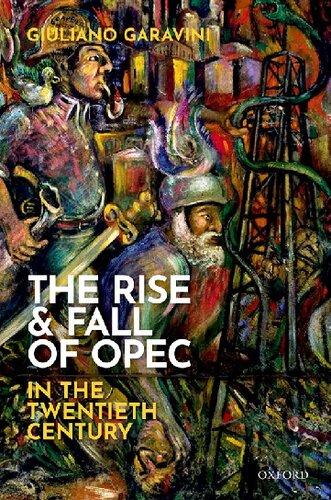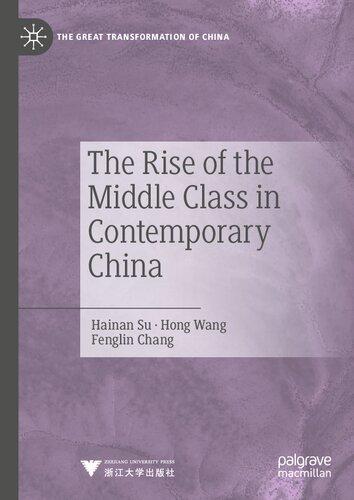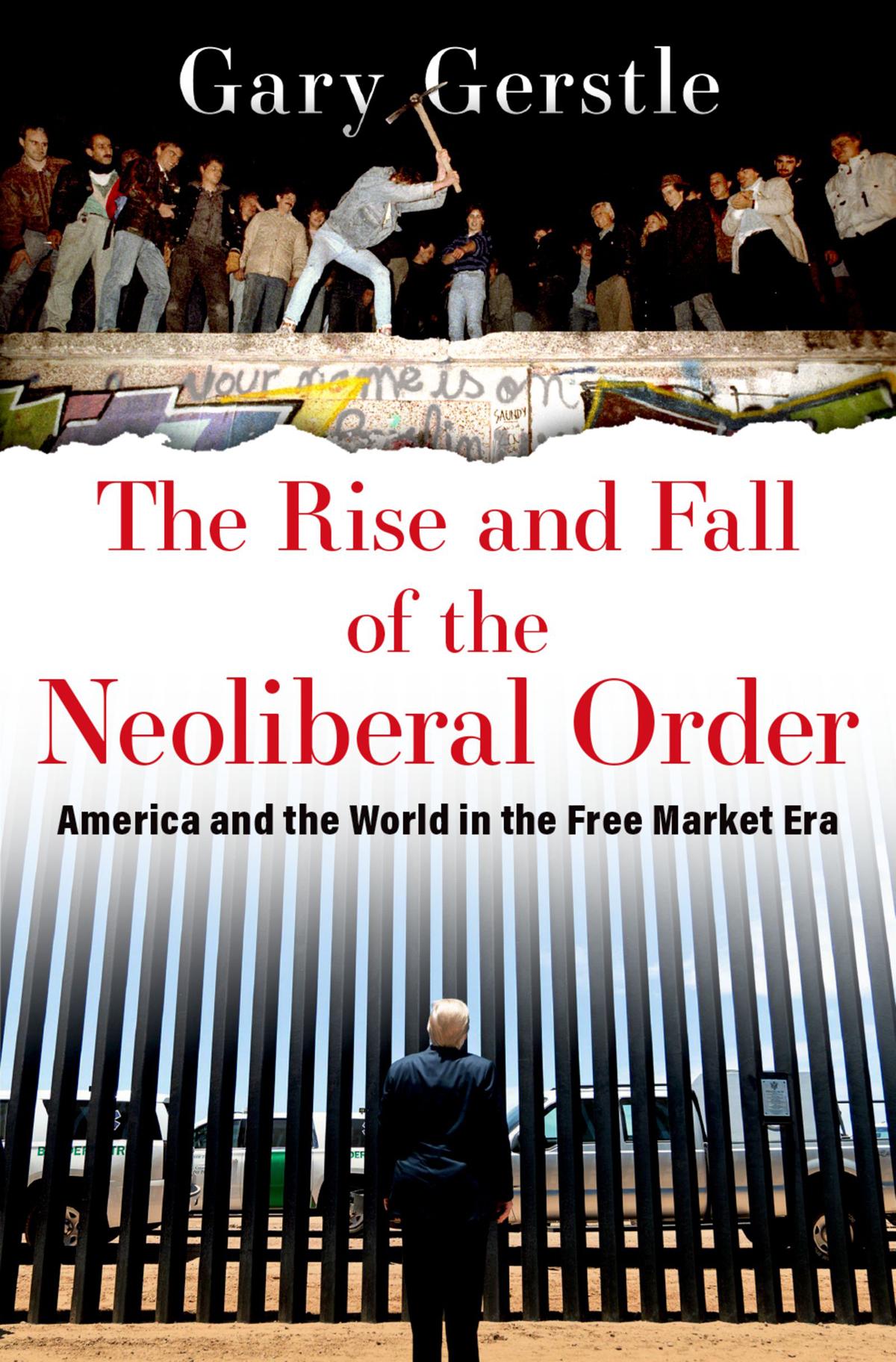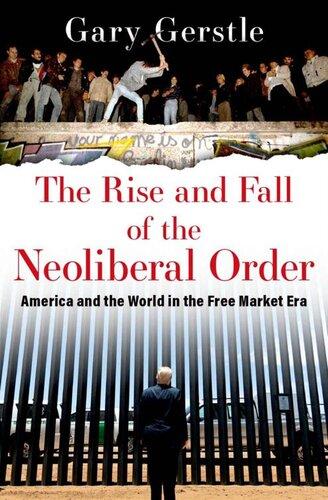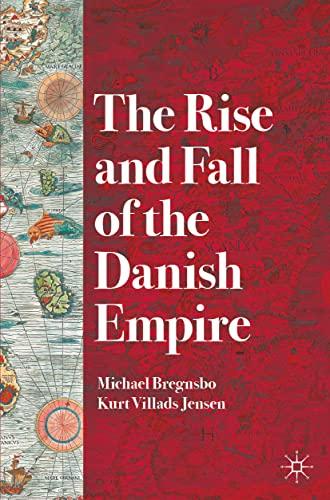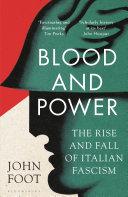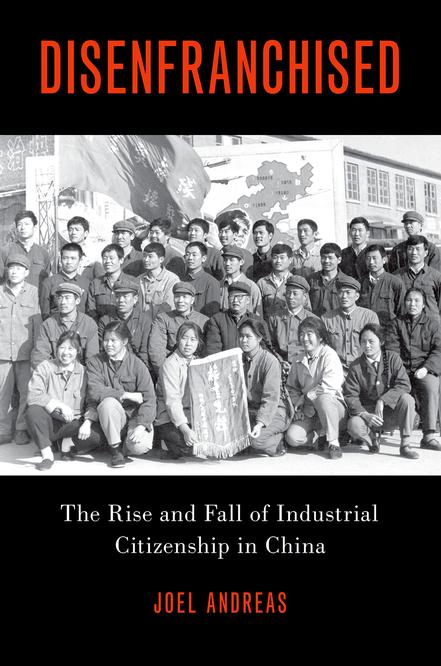Visit to download the full and correct content document: https://ebookmass.com/product/disenfranchised-the-rise-and-fall-of-industrial-citizens hip-in-china-joel-andreas/
More products digital (pdf, epub, mobi) instant download maybe you interests ...
The Rise and Fall of OPEC in the Twentieth Century
Giuliano Garavini
https://ebookmass.com/product/the-rise-and-fall-of-opec-in-thetwentieth-century-giuliano-garavini/
The Rise of the Middle Class in Contemporary China
Hainan Su
https://ebookmass.com/product/the-rise-of-the-middle-class-incontemporary-china-hainan-su/
The Rise and Fall of the Neoliberal Order Gary Gerstle
https://ebookmass.com/product/the-rise-and-fall-of-theneoliberal-order-gary-gerstle-2/
The Rise and Fall of the Neoliberal Order Gary Gerstle
https://ebookmass.com/product/the-rise-and-fall-of-theneoliberal-order-gary-gerstle/
The Rise and Fall of the Danish Empire Michael Bregnsbo
https://ebookmass.com/product/the-rise-and-fall-of-the-danishempire-michael-bregnsbo/
The Rise and Fall of the Age of Psychopharmacology
Edward Shorter
https://ebookmass.com/product/the-rise-and-fall-of-the-age-ofpsychopharmacology-edward-shorter/
The Rise and Fall of Peace on Earth Michael Mandelbaum
https://ebookmass.com/product/the-rise-and-fall-of-peace-onearth-michael-mandelbaum/
The Rise and Fall of Peacebuilding in the Balkans 1st
ed. Edition Roberto Belloni
https://ebookmass.com/product/the-rise-and-fall-of-peacebuildingin-the-balkans-1st-ed-edition-roberto-belloni/
Blood and Power: The Rise and Fall of Italian Fascism
John Foot
https://ebookmass.com/product/blood-and-power-the-rise-and-fallof-italian-fascism-john-foot/
Advance Praise for Disenfranchised
“In Disenfranchised, Joel Andreas provides the most thorough account available of workplace politics in Mao-era China, as well as an assessment of the impact of market reforms. Conceptually concise and empirically rich, this study pushes us to rethink the relationship between democracy and the market in the process of post-socialist transformation. This is both a wonderful labor history as well as theoretically engaged political sociology—highly recommended!”
Eli Friedman, Associate Professor of International and Comparative Labor, Cornell University, and author of Insurgency Trap: Labor Politics in Postsocialist China
“Disenfranchised charts the rise and fall of the most sustained experiment in industrial citizenship anywhere. Andreas documents how serious a commitment this was for the party/state, how it resonated with workers, the ways it developed over the Maoist period, and how structural reform managed—often against considerable worker opposition—to dismantle it. This book will redefine our understanding of factory politics in Maoist China and throw what has followed into the starkest relief.”
Marc Blecher, James Monroe Professor of Politics and East Asian Studies, Oberlin College, and co-author of Tethered Deer: Government and Economy in a Chinese County
“Questioning the one-dimensional conventional wisdom concerning the evolution of Chinese industrial relations, this marvelously researched and analytically sophisticated book provides a nuanced and richly textured account of the vicissitudes of grassroots industrial citizenship in China from the late 1940s to the present. A must read for scholars interested in the history, legacy, and prospect of China’s socialist experiments in its tumultuous twentieth century.”
Yiching Wu, Associate Professor of East Asian Studies, University of Toronto, and author of The Cultural Revolution at the Margins: Chinese Socialism in Crisis
“In a highly original account, Andreas shows that under Maoism Chinese workers developed the capacity to control and discipline their supervisors, but their lack of autonomy ultimately undermined communism’s professed goals. Taking advantage of the regime’s restrictions of bottom-up initiatives, first bureaucrats and then capitalists obliterated workers’ inclusion. Through exploring this exceptional case, Andreas raises general—and troubling— questions for all readers and activists who believe in participatory democracy.”
Cihan Tuğal, Associate Professor of Sociology, University of California, Berkeley, and author of The Fall of the Turkish Model
Disenfranchised
The Rise and Fall of Industrial Citizenship in China
JOEL ANDREAS
Oxford University Press is a department of the University of Oxford. It furthers the University’s objective of excellence in research, scholarship, and education by publishing worldwide. Oxford is a registered trade mark of Oxford University Press in the UK and certain other countries.
Published in the United States of America by Oxford University Press 198 Madison Avenue, New York, NY 10016, United States of America.
© Oxford University Press 2019
All rights reserved. No part of this publication may be reproduced, stored in a retrieval system, or transmitted, in any form or by any means, without the prior permission in writing of Oxford University Press, or as expressly permitted by law, by license, or under terms agreed with the appropriate reproduction rights organization. Inquiries concerning reproduction outside the scope of the above should be sent to the Rights Department, Oxford University Press, at the address above.
You must not circulate this work in any other form and you must impose this same condition on any acquirer.
CIP data is on file at the Library of Congress
ISBN 978–0–19–005261–4 (pbk.) ISBN 978–0–19–005260–7 (hbk.)
1 3 5 7 9 8 6 4 2
Paperback printed by WebCom, Inc., Canada Hardback printed by Bridgeport National Bindery, Inc., United States of America
Preface
This book was inspired by the same fundamental question that led me to write my first book: why did the twentieth-century Communist project to eliminate class distinctions fail? The most uncomplicated answer— and one that is assumed without much inquiry by many scholars—is that Communist leaders were never serious about the egalitarian goals they espoused. I contested this answer in the first book, Rise of the Red Engineers: The Cultural Revolution and the Origins of China’s New Class, which recounted the protracted series of harsh class-leveling campaigns carried out by the Chinese Communist Party (CCP) in the decades after it seized power in 1949. The book provided an answer to the question but not one that was definitive. Even if it did not fully explain why the CCP’s class-leveling project failed, however, it did help me pose the question more sharply. To understand the agenda of the present book, therefore, it is necessary to briefly summarize the arguments I elaborated in Red Engineers
Class-leveling campaigns in China targeted three types of capital— economic, cultural, and political. The express goal was to democratize power, that is, to radically redistribute capital so that it was dispersed more equally through the population. The focus shifted sequentially from economic to cultural and finally to political capital. In all three fields, I argued, leveling campaigns were ruthless and violent; the results, however, differed considerably.
In the early years of Communist power, the main target was economic capital, that is, private property in means of production. In rural China, land was redistributed and then collectivized, while in urban China, all private enterprise was nationalized or collectivized. The propertied classes were completely, often violently, dispossessed, and economic capital, which had been the most important mechanism of class differentiation, was completely eliminated. All productive property was placed in the hands of public entities, and class differences within these entities, which remained substantial, were subsequently based largely on cultural and political capital.
After economic capital was eliminated, the focus of leveling shifted to cultural capital, that is, the educational and cultural resources that served
as means of class differentiation. Under the banner of eliminating the distinction between mental and manual labor, Communist leaders relentlessly undermined the status of the old educated elites, attacking the cultural traditions that underpinned their status, compelling those who worked in offices to engage in manual labor, and systematically redistributing access to education. During the Cultural Revolution decade, the most radical phase of cultural redistribution, schools were built in virtually every village and the overarching goal was to have every child study for 9 or 10 years and then go to work. Higher education was reduced to short-term technical training programs, universities built factories and factories built universities, and admission was governed by a “worker–peasant–soldier” recommendation system, which discriminated against children of the old educated elites (and, in practice, often favored children of the new political elites). Although these radical policies did not come close to eliminating class differences based on education and the harm they caused was substantial, the program was coherent and effective and, during the years it was in place, substantially reduced inequality in the cultural field.
Efforts to level class differences based on political capital—credentials and networks provided by party membership—were, unsurprisingly, the most fraught. These were the resources that underpinned the status and power of party officials, and Communist attacks on economic and cultural capital can easily be interpreted simply as a means to enhance the power of political capital; indeed, this was often the explicit purpose. In the course of dispossessing landlords and capitalists, veterans of the Communist insurgency took charge of villages and factories, and political criteria took precedence over education and expertise in promoting new leaders. As power was steadily concentrated in the hands of Communist officials, however, Mao Zedong, who was responsible for initiating all class-leveling campaigns, increasingly made these officials—and the political capital on which they relied—the focus of attack. By the time he launched the Cultural Revolution in 1966, the main target had become the cadres of his own party, which he had determined were becoming a new “bureaucratic class.”
Incited by Mao, students, workers, and peasants formed “rebel” groups in order to attack the leaders of their own schools, factories, and villages. The rebel movement was inspired by slogans about democracy and “mass supervision,” which in communist terminology referred to making leaders accountable to the masses. Local party cadres were condemned for abusing their power, seeking privileges, practicing “commandism,” suppressing
criticism from below, isolating themselves from the masses, and governing in a bureaucratic fashion. Moreover, they were virtually all thrown out of office, and rebel groups were invited to help decide who among them were fit to be rehabilitated.
Ultimately, however, although the upheavals of the Cultural Revolution succeeded in undermining the authority of party cadres and temporarily enhancing the power of insurgent students, workers, and peasants, no institutions capable of effectively deconcentrating political power were established. For all their destructive power, the political experiments of this period failed in the long run to do much to make leaders more accountable to those below them. Thus, the communist project to level class distinctions, which had eliminated economic capital and was steadily diminishing differences based on cultural capital, ultimately foundered due to the failure of party leaders to democratize political capital.
As I set out to do the research that led to this book, my aim was to dig deeper into the causes of this failure. This required a different kind of research design. First, I shifted the site of investigation. The site of Red Engineers was China’s top engineering school, Tsinghua University, which was appropriate for a project that focused on political and cultural elites. The university was at the epicenter of early battles that pit political against cultural capital, and in the post-Mao years, Tsinghua became the premier training ground for members of a new technocratic class—embodying a merger of political and cultural elites—that took the helm of the Chinese state. Institutions populated by elites, however, were not the best place to look into how power was distributed and redistributed between political elites and the masses. I, therefore, shifted the site of investigation from higher education to industry.
Factory hierarchies provided a particularly instructive setting to examine the results of Mao’s efforts to make Communist cadres more accountable to those below them. This was true for two reasons. First, the CCP made workplaces the main site through which it governed the population. Under the rubric of “Democratic Management,” the party developed an array of institutions and practices, including shop-floor self-management and staff and workers congresses, to foster popular participation in factory administration. In this book, I investigate how these institutions functioned in practice, identifying fundamental problems that limited their democratic potential. Second, factories became key battlefields during the Cultural Revolution. The central chapters of this book are dedicated to
Preface
examining what happened after Mao, who had little interest in institutional arrangements, called on workers to form rebel organizations and attack the leaders of their factories.
I have also employed a different kind of theoretical framework— involving citizenship and autonomy—designed to analyze problems of democratic participation. This framework adapts theories about democracy in state politics in order to fit them to industrial politics. Citizenship, I propose, is the essential foundation for democratic participation in any type of organization, while autonomy is required for citizens to effectively participate in democratic decision-making and hold leaders accountable. The first chapters of this book examine the system of industrial governance established during the decades following the 1949 revolution. During that period, Chinese workers gained “industrial citizenship,” that is, secure job tenure and recognition as legitimate stakeholders in factories, but constraints on autonomous collective action limited the potential for workplace democracy. The final chapters of the book then analyze changes in industrial governance as Chinese factories have been transformed into profit-oriented enterprises, subjecting workers to much more precarious employment relations, while continuing to suppress autonomous collective action.
The research for this book included consulting documents, but the most important sources were interviews with 121 workers and cadres who have worked in Chinese factories at some point between the 1940s and the present. I owe a great debt to these individuals, who generously spent many hours detailing their experiences and elaborating their understanding of events. I am especially grateful to those—including many who had been laid off or retired—who met with me on multiple occasions over many years, allowing us to delve deeper into issues I came to better understand as time went on.
My research was greatly facilitated by the close proximity of China’s industrial and academic worlds during the Mao era, a product of the Communist program to eliminate differences between mental and manual labor. Among my first interviewees were professors who in their youth had worked in factories or mines for a number of years during the Cultural Revolution decade and were often able to provide not only insightful accounts but also valuable introductions. This group included Dai Jianzhong, Dong Zhenghua, Li Lulu, Lu Aiguo, Xu Hailiang, Yang Heping, Yin Hongbiao, and Zhao Dingxin. Important introductions were also provided by three Johns Hopkins graduate students, Dong Yige, Li Yao, and Yue Yin,
whose parents had worked in Chinese industrial enterprises. Li and Dong also accompanied me to visit factory communities in their hometowns, and they each co-authored papers that grew out of this project.
Several left-wing activists, some of whom had been leaders of rebel organizations during the Cultural Revolution, also provided key introductions, connecting me with retired workers who had been leaders of factory rebel groups. These leaders, in turn, introduced me to other Cultural Revolution activists, including leaders of conservative workers’ organizations.
In addition to Dong, Li, and Yue, a number of other Hopkins graduate students, including Rachel Core, Huang Lingli, Li Yuyu, Liang Guowei, Zhan Shaohua, and Zhang Lu, have assisted with this project in one way or another, including summarizing documents and providing criticism and advice on draft chapters. Several have since begun teaching careers at other universities. Similar help was provided by Wang Yingyao before she came to study in the United States and by several Hopkins undergraduates, including Crystal Lee, Amy Han, Jaycee Yao, and Gloria Li. I have also been fortunate that several young scholars at Chinese academic institutions who study similar questions, including Fan Chunyan, Feng Xiaojun, Li Peiyao, and Liu Fengwenzhu, were able to visit Hopkins over the past decade. All provided valuable help and advice, and Li and I ended up co-authoring a paper.
Many of the people I interviewed also provided historical documents that supplied contemporary accounts, chronologies, and statistical data, which were invaluable in supplementing, complementing, and amending the content gleaned from interviews. I am especially grateful to Wu Caixia, who not only gave me access to her considerable collection of Cultural Revolution factional newspapers but also helped guide me through their content.
I am also indebted to friends and colleagues—many more than I can mention here—who offered valuable suggestions as I drafted chapters of this book. These include my colleagues at Hopkins, including Rina Agarwala, Ryan Calder, Marta Hanson, Ho-Fung Hung, Mike Levien, Tobie Meyer-Fong, Bill Rowe, Beverly Silver, and Kellee Tsai, who provided encouragement and constructive criticism. Scholars from a number of other institutions, including Kathryn Bernhardt, Robert Brenner, Anita Chan, Vivek Chibber, Julia Chuang, Alex Day, Feng Tongqing, Eli Friedman, Mark Frazier, Karl Gerth, Gao Mobo, David Goodman, Guang Lei, Guo Yingjie, He Gaochao, Rebecca Karl, Ching Kwan Lee, Li Huaiyin, John Logan, Kristen Looney, Vivienne Shue, Dorothy Solinger, Christian Sorace,
Preface
Su Yang, Frederick Teiwes, Tia Thornton, Tong Xin, Jon Unger, Wang Dan, Jeffrey Wasserstrom, Felix Wemheuer, Wu Yiching, and Yan Hairong, also offered helpful advice on talks, papers, and draft chapters. I am especially thankful to participants in a book workshop at the University of California, Berkeley, who commented on the full manuscript, including Marc Blecher, Michael Burawoy, Long Yan, and Cihan Tugal.
I am also grateful to James Cook and Emily Mackenzie at Oxford University Press for expertly shepherding this book through the review and production processes. This book could not have been written without financial support for research and writing provided by the Sociology Department at Johns Hopkins as well as a Fulbright-Hays Faculty Research Abroad Fellowship and visiting fellowships from the China Studies Centre at the University of Sydney and from the Centre for Asian Studies at the University of Adelaide.
A final word of appreciation goes to my partner, Ay, and my daughter, Marley, for their companionship and patience through the years I have been working on this book (which is longer than Marley can remember!).
Joel Andreas Baltimore, Maryland April 2019
Disenfranchised
China and the Era of Industrial Citizenship
Industrial employment in China has changed radically in recent decades, shifting from a system of permanent job tenure to one that depends largely on highly flexible, precarious labor. Under the old system, which existed for four decades, from the 1950s through the early 1990s, the great majority of urban employees were members of a work unit (danwei 单位), and membership entailed lifetime employment. The archetypal industrial work unit was a walled community that included, in addition to production facilities, apartment blocks for workers and their families, childcare centers, schools, medical clinics, and recreation facilities. There was little mobility among work units; it was difficult for an individual to seek work elsewhere and hard for an enterprise to fire an employee. Workers’ children were often able to secure jobs in the work unit in which they grew up, and retirees continued to live in factory apartments, remaining part of the work unit community until the end of their lives.
Beginning in the mid-1990s, radical market reforms systematically dismantled the work unit system, replacing it with an industrial order in which workers have a much more tenuous relationship with the enterprises that employ them. Tens of millions of workers lost their jobs in the course of industrial restructuring, and those who remained were given limitedterm contracts. Chinese factories today strive to retain a small number of core employees—management and technical personnel as well as key skilled workers—while hiring most workers on a more casual basis. Many enterprises hire workers through labor contracting agencies or technical schools, which provide “interns” on short-term contracts. A large part of the industrial workforce is now composed of young migrants who follow shifting employment opportunities and find it increasingly difficult to secure jobs as they get older. As in the past, many large factories provide employee housing, but today this typically consists of single-sex dormitories for young workers.
These changes are not unique to China. What has happened in Chinese factories is an extreme manifestation of trends that have reshaped employment relations across the globe. During the decades that followed the Second World War, factories in many countries—both socialist and capitalist—provided stable, long-term employment. Economist Guy Standing has aptly called the postwar decades the “era of industrial citizenship.”1 The term captures essential features of the era, in which industrial employment not only secured economic entitlements but also entailed political rights and duties. In looking back, most scholars have focused on the economic characteristics that made industrial relations during this period distinct, including employment stability and factory-provided welfare benefits. The political characteristics of the era, however, were also remarkable. Industrial citizenship meant that workers were not simply hired hands but recognized as legitimate stakeholders. The idea of “workplace democracy” was in vogue, and a wide range of organizational forms were developed to facilitate workers’ participation in factory management, some more democratic than others. Industrial workers were highly organized, some in trade unions of their own creation, others in organizations created by employers or the state. Workers were also mobilized by political parties to participate in national politics, and many of these parties styled themselves as representatives of the working class.
Although the institutions of industrial citizenship reached their zenith during the decades that followed the Second World War, they were first forged during and after the First World War, with the spectacular rise of socialist and labor movements. Industrial workers became a force to be reckoned with. The institutions of industrial citizenship emerged as a result of radical demands from below combined with efforts from above to steer these demands in directions that would enhance rather than undermine social and political stability. The First World War gave rise to revolutionary factory-based “works councils” in several European countries. In Russia, where a revolution in which industrial workers played a critical role triumphed, Bolshevik leaders—suddenly transformed from revolutionaries into rulers—redirected works councils toward new state-building projects. In Germany and other countries where similar revolutions failed, state officials and capitalists endeavored to turn works councils into instruments of class compromise. The Second World War brought a second wave of political upheaval, creating fledgling regimes around the world that had cause to celebrate—and fear—industrial workers. As industrialization
became a paramount national project for developing countries, states of many different ideological stripes found reason to offer factory workers relatively generous economic entitlements and special terms of political incorporation.
Industrial citizenship took a wide variety of forms. New socialist states in China and elsewhere followed the Soviet model of rapid industrialization and worker incorporation, which included elaborate workers’ selfmanagement institutions in factories. Capitalist states established tripartite corporatist arrangements that brought together trade unions, employers’ associations, and state organs to manage industrial conflicts and discuss industrial policy. West Germany and a number of other Western European countries established a new generation of works councils. In order to tamp down labor unrest, industrial enterprises in Japan adopted paternalistic arrangements, promising core workers lifetime employment and encouraging them to manage production on the shop floor. Even the United States, which rejected the idea of works councils and tripartite arrangements, encouraged collective bargaining between employers and trade unions. In the global South, developmentalist and populist regimes created a wide variety of institutions to incorporate industrial workers at the factory level as well as in national politics.2 The International Labour Organization, which became an arm of the newly established United Nations, called for the “decommodification of labor” and promoted the idea of “industrial democracy.”3
Industrial citizenship did not, of course, necessarily mean industrial democracy. Even at the height of the era, democratic participation in factory decision-making was usually quite limited and often formalistic; in some places, at some moments, workers enjoyed substantial power, but those places and moments were exceptional. Of course, the relationship between citizenship and democracy in citizenship’s quintessential modern domain— national states—is similarly tenuous. Today all countries recognize their native-born and naturalized populations as citizens, but the extent to which citizens actually enjoy democratic rights and powers varies considerably.
Citizenship, however, is hardly meaningless. The transformation of subjects into citizens was a momentous accomplishment; citizens became legitimate stakeholders in states, enabling them to make claims on the government that subjects of monarchies could not make. Citizenship is the essential prerequisite for democratic participation. The same principle applies in factories: if workers have not gained citizenship status in a
factory—if their jobs are not secure and they are not recognized as legitimate stakeholders—they can hardly claim the right to participate in enterprise decision-making and hold factory leaders accountable.
Industrial citizenship—like national citizenship—involves not only inclusion but also exclusion.4 Citizens enjoy rights that non-citizens are denied, and when incumbent workers are able to effectively lay claim to jobs, this creates barriers to entry for others. Moreover, inside the polity—the national state or the enterprise—some may enjoy full citizenship rights, while others do not. In this way, part-timers, temporary workers, and contract employees are in a position akin to immigrants who lack state citizenship.
States that embrace industrial citizenship often take on corporatist characteristics, incorporating distinct sections of the population on different terms. During the era of industrial citizenship, in many countries factory workers were provided with economic entitlements and political prerogatives not available to others. Left on the outside, or at least in less advantageous positions, were most of the rural population and informally employed sectors of the urban population. Moreover, the archetypal industrial citizen was male as domestic duties and prevailing ideas and policies excluded many women from industry and relegated those permitted entrance to subordinate and marginal positions.
The 1970s were the high point of the era of industrial citizenship. Since then, the rise of neoliberal capitalism has substantially eroded employment security along with the ideas of industrial citizenship and industrial democracy. Although the advance of neoliberalism has been uneven, the institutions of industrial citizenship have been effectively challenged everywhere as they have been—accurately—portrayed as infringements on private property rights, open labor markets, and profit imperatives. In countries in which industrial citizenship was only weakly established, there have been few obstacles to the imposition of neoliberal labor regimes, but even in countries in which industrial citizenship was more firmly entrenched, hostile political and economic realities have significantly undermined the institutions of the previous era. After being rolled back in the 1980s, industrial citizenship faced decimating attacks in the 1990s. Since then, workers in countries across the globe have increasingly been reduced from industrial citizens to hired hands.
Examining the rise and fall of industrial citizenship provides another angle from which to consider the relationship between market reforms and democratization. In the 1990s, as China and other socialist countries were
reorganizing their economies according to capitalist principles, academics debated the possible political consequences. In the “dual transitions” literature that emerged, a common assumption was that market reforms would—or at least should—go hand in hand with the adoption of liberal democratic political institutions. While few argued that market reforms would automatically lead to political liberalization, much of the scholarship was underpinned by a deep-seated belief that there was an intrinsic link between capitalism and liberal democracy.5 The actual results have been mixed. In some countries, market reforms have been accompanied by movement toward more liberal political institutions, while in others they have not. By now, it is clear that there is no intrinsic relationship between market reforms and political liberalization; capitalism in post-socialist countries, like capitalism more generally, is compatible with a wide variety of regime types, both liberal and authoritarian.
The dual transitions literature did not consider the relationship between market reforms and democracy inside the workplace. This relationship, I will argue in this book, involves a different set of mechanisms and dynamics and, unlike in the sphere of state politics, the impact of market reforms on workplace democracy has been direct—and unambiguously negative. Because a central goal of market reforms, in China and elsewhere, has been to give employers greater employment flexibility, the reforms have inevitably undermined industrial citizenship, the essential foundation for any kind of workplace democracy. As Chinese enterprises have joined global markets and adopted capitalist principles, I will show, they have been compelled to minimize labor costs, spurring them to undermine workers’ influence and concentrate power at the top. Chinese workers, having lost their secure footing in factories, have been in a poor position to resist. Thus, while market reforms have done little to promote the democratization of state politics, they have fundamentally undermined conditions for democracy inside the workplace. Instead, they have fostered extreme regimes of despotic control.
Among the many countries that have implemented some form of workers’ participation in factory governance, China is a particularly interesting case. This is not because Chinese factories were at any point an exceptionally admirable model of workplace democracy; they were not. The Chinese case, however, is especially instructive for reasons that have to do with the two basic conditions I highlight as necessary for industrial democracy— workplace citizenship and autonomy. The degree to which individuals have
citizenship rights in their workplaces varies greatly, and this, I propose, has a critical impact on the possibilities for democratic participation. For industrial democracy to exist, however, workers must not only have citizenship but also enjoy the right to autonomously pursue common agendas. Without autonomy, even factories in which workers enjoy citizenship can be characterized by paternalistic—rather than democratic—industrial relations.
With regard to both of these conditions, the evolution of industrial relations in China since 1949 is of particular interest. First, the conditions for industrial citizenship have gone from one extreme to the other as permanent job tenure has given way to highly precarious employment. Second, although the problem of lack of autonomy has been particularly acute in China, so were efforts to confront this problem.
Capitalism, Socialism, and the Chinese Version of Industrial Citizenship
While the twentieth century socialist experiments in China and other countries were part of a global wave of industrial citizenship, they were also distinct in fundamental ways. To describe these differences, it helps to first review the changes wrought by the rise of capitalism and the modern state. In both the economic and political realms, modernity has witnessed the creation of ever larger and more powerful bureaucratic institutions. These leviathans have displaced organizations that were much smaller in scale. There was great variation among these smaller organizations, but they had a number of characteristics in common. They were typically membership communities—kinship groups, villages, guilds, and so on—which were usually composed of familial units responsible not only for production but also for consumption and reproduction (raising the next generation). Moreover, these communities were not only economic entities but also— due to their communal nature—political entities in the sense discussed in this book, with their members making up their citizenry. Some allowed considerable room for democratic participation, but most were dominated by patriarchal power.
The inexorable rise of capital and the state broke down these communities, incorporating their members as individuals into new hierarchies of authority. On the one hand, as capitalists concentrated the means of production into great enterprises, they not only separated labor from the
means of production but also divided production from consumption and reproduction. Unlike the traditional organizations they displaced, capitalist enterprises took charge only of production, leaving responsibility for consumption and reproduction to families (which were largely stripped of their previous productive functions).
On the other hand, states, which had previously let communal groups manage their own affairs, gradually claimed jurisdiction over even the most local matters, enlisting a massive corps of officials to enforce this claim. Parochial communal organizations were replaced by centralized bureaucracies. As the state and capital each expanded their reach, they split the modernizing world between them, one claiming the political and the other the economic domain. Thus, politics and economics, which in the past had been combined within communal entities, were also split into separate realms.
Communist regimes in some ways reversed these processes. Marx had proclaimed that socialism would reunite labor with the means of production, and the parties inspired by his doctrine did exactly that after they came to power. Socialist enterprises became industrial communities that featured long-term employment, and, like traditional production organizations, they took responsibility not only for production but also for consumption and reproduction. Moreover, as victorious communist parties took control of workplaces, they made them important sites of governance, once again combining the political and economic domains under one roof. Within the workplace, they established institutions that fostered worker participation in decision-making and while some had little actual power, others had greater practical impact.
Making the workplace a site of governance was consequential for the nature of politics. Because workplaces are sources of livelihood and feature much more intense and sustained interaction than do residential neighborhoods, when the workplace became a site of governance the state was brought into more intimate contact with the populace. This enhanced the potential for participatory democracy but also for tyranny. Large-scale production inherently requires a high degree of cooperation and discipline, and in the factories spawned by the rise of industrial capitalism cooperation and discipline had been accomplished by highly undemocratic means as authority was concentrated at the top and workers typically had little autonomy. Communist parties were, therefore, promising to cultivate their brand of democracy on difficult terrain.
Moreover, the program and culture of these parties both enabled and hindered the potential for industrial democracy. On the one hand, the socialist program, which entailed leveling social inequalities and elevating the political position of workers and peasants, bode well for citizenship. On the other hand, the determination of party leaders to cultivate a unified collective will under centralized leadership severely limited the possibilities for autonomy. After their conquest of power, party leaders continued to justify monocratic principles—engendered under the military exigencies of brutal civil wars—as an ongoing requirement for radically transforming the social order.
In sum, all of the variations of the twentieth-century communist project shared four features of particular relevance to the prospects for industrial democracy: 1) they created strong industrial communities that fostered norms of workplace citizenship, 2) they made these communities a central site of governance and participation, 3) they took radical measures to level existing social inequalities, and 4) they insisted on maintaining a political monopoly. There was, however, a great deal of variation among countries, and among them China stands out for several reasons.
In terms of industrial citizenship, under the Chinese work unit system— in place through the 1990s— employment was perhaps more permanent than in any other country. The movement of individuals was strictly controlled through household registration, food rationing, workplace- based welfare provision, and labor assignment policies. The system was also very extensive, absorbing virtually the entire urban population, including the vast majority of women; in fact, at the height of the work unit era in the late 1970s over 90% of working-age women in urban China were employed. 6 In his perceptive portrayal of the Chinese system, economist Barry Naughton highlighted the durability of employment and the welfare entitlements associated with it, observing, “Employees are not so much contractors with the danwei as they are citizens of it.” 7 Sophia Woodman stressed the political connotations of membership in both urban work units and rural communes. In China, she wrote, “the boundaries between work and political engagement often blurred in the collectives of the past, so the concept of participation ( canyu 参 与 ) retains broader connotations than in the narrowly political meaning generally used in citizenship studies.” 8 I would frame her observation a little differently: in China, work units themselves became political entities.
If all socialist states turned workplaces into sites of governance, this was especially true in China because of the centrality of the work unit system. Work units became the main site through which the state exercised social control over the population. They maintained the all-important personal dossiers of their members and managed their residential compounds, schools, clinics, and recreation facilities. Work units also became the main venues for popular political participation, both through periodic political campaigns and through elaborate “Democratic Management” (minzhu guanli 民主管理) institutions established in factories and other workplaces. Workers were organized into small teams that met before and after work and were expected to manage their own affairs on the shop floor. They elected representatives to staff and workers congresses that nominally had the power to review factory policies and elect and evaluate factory leadership. Workers were called gongchang de zhuren (工厂的主人), which can be translated as “masters,” “owners,” or “hosts” of the factory. While they were certainly not masters or owners, they could be considered to be hosts, that is, members and permanent stakeholders—or citizens—of the factory.
While the Chinese work unit system fostered strong norms of industrial citizenship and participation, however, the second condition necessary for industrial democracy—autonomy—was distinctly lacking. As in other countries that followed the Soviet model, the Chinese Communist Party (CCP) created a one-party state and harshly suppressed forms of independent organization. Although party leaders strongly encouraged workers’ participation, the entire Democratic Management apparatus was controlled by the party, which monopolized power at all levels, including inside factories, and autonomous organization was normally prohibited.
The experience of the CCP, however, was distinctive because of its exceptionally radical program of social leveling, which Mao Zedong extended— tentatively—to include the political power and privileges of party cadres. Mao’s dissatisfaction with the way the officialdom of his own party behaved in power led him to conduct fateful experiments with autonomous criticism of officials from below. The most audacious was the Cultural Revolution, when Mao—concerned that party cadres were becoming a privileged “bureaucratic class”—suddenly called on workers to organize their own “rebel fighting groups” and attack the party leaders in their workplaces. The battles of the Cultural Revolution were the consequence of an effort to deal with the problems created by the lack of autonomy that was particularly intriguing, even if ultimately it was largely unsuccessful.
In this book, I will examine the evolution of industrial relations in China from 1949 to the present. My investigation has been oriented to answering the following questions: To what extent have workers enjoyed rights to citizenship and autonomy in their workplaces? How have these rights changed over this time period, and what has caused these changes? And finally, as these rights have changed, how much power have workers actually had to shape their conditions of work, participate in decision-making, and hold workplace leaders accountable?
Industrial Citizenship, Autonomy, and Democracy
Before previewing the content of the book and discussing how it fits into existing scholarship, it is necessary to elaborate in more detail the basic concepts and theoretical propositions that have guided my investigation. I start with a simple definition of democracy: that influence over decisionmaking in an organization is widely dispersed among members and that leaders can be held accountable to members. This is a broad definition that can be applied to states but can also be applied to non-sovereign organizations, including industrial enterprises. It does not require specific institutional arrangements or strict qualifications and avoids making dichotomous determinations about whether or not an organization is democratic in favor of assessing whether it is more democratic or less democratic. Although there are persuasive arguments for adopting stricter definitions of democracy, they would be of limited use in analyzing the governance of workplaces; even employing the simple and inclusive definition I have adopted, very few workplaces anywhere in the world can be considered very democratic.
In analyzing workplace governance regimes, I start with Robert Dahl’s framework for evaluating the conditions that make democracy possible, in which he highlighted two dimensions: inclusion and contestation. The first refers to the extent to which the population is entitled to participate in democratic processes, while the second refers to the openness of these processes to competition. Dahl submitted that no existing regime could be considered fully democratic, but he proposed that democratic claims could best be evaluated by considering these two conditions. Although he used this framework to analyze national states, he suggested that it could also be
applied to other types of organizations, including trade unions, religious organizations, and firms.9
In adapting Dahl’s basic framework, I have chosen to use the concepts citizenship and autonomy because they help elucidate the conditions necessary for democratic participation in workplace governance. The first condition, citizenship, connotes inclusion as it recognizes the elemental qualification that only members of an organization are accorded rights to participate in democratic decision-making within that organization. This is true of any organization, from small voluntary associations to sovereign states, and it is certainly true of workplaces. When Dahl turned his attention to democracy in the workplace, he pointed out that this would entail transforming “employees from corporate subjects to citizens of the enterprise.”10
The second condition, autonomy, is the fundamental requirement for contestation as only those who enjoy autonomy are in a position to engage in contestation. Its meaning, however, is broader. Autonomy is commonly defined as capacity for self-governance; for my purposes, it refers to the capacity for independent action at multiple levels, from shop-floor self-management to collective action independent of enterprise and state authorities. When individuals manage their own work, this does not necessarily involve contestation, but even autonomy at this basic level is absent in despotic systems of industrial relations, in which even the most minute activities are controlled by factory authorities. At higher levels, the meaning of autonomy becomes more collective, more political, and more contentious, including the right to organize to change policies or capture positions of power.
The proposition underlying this framework is that citizenship rights and autonomy provide the basic conditions for workplace democracy. Both are necessary conditions, and strengthening these conditions facilitates democratic participation, while curtailing either leads to more coercive governance. Like democracy, both are best treated as continuous rather than dichotomous variables.
Workplace citizenship can vary from full citizenship to non-citizenship, with a wide range of intermediate statuses. Strong workplace citizenship rights, for instance, are typically accorded to family members in kinshipbased production organizations, as well as members of closed villages, guilds, and production cooperatives and wage workers with permanent job tenure. At the other end of the spectrum, very weak citizenship rights are accorded to casual wage workers, contract employees, and chattel slaves.
In this basic definition of citizenship rights, I am referring not to any specific political or economic rights that citizenship might entail but simply to the durability of an individual’s association with an organization and the recognition that the individual is a legitimate stakeholder in the organization. In addition to this basic right, full citizenship can entail other specific rights, the content of which depends on the ideological and political framework in which citizenship is embedded. As T. H. Marshall stressed, citizenship implies equal access to these rights and, because equal access is always compromised in practice, the expectations of citizenship frame conflicts over inequality:
Citizenship is a status bestowed on those who are full members of a community. All who possess the status are equal with respect to the rights and duties with which the status is endowed. There is no universal principle that determines what those rights and duties shall be, but societies in which citizenship is a developing institution create an image of an ideal citizenship against which achievement can be measured and towards which aspiration can be directed.11
Just as citizenship is intrinsically linked to equality, equality is intrinsically linked to democracy. Citizenship enables demands for equality, and, as Dahl observed, inequality among citizens is a fundamental obstacle to the full development of democracy.12
Citizenship creates a sense of solidarity that enhances the capacity for collective action, both of an entire organization and of factions within it. When states are preparing for war, for instance, they can more effectively mobilize citizens than subjects; at the same time, citizens are more likely than subjects to make collective demands on the state. The same is true in an industrial enterprise. If workers are recognized and treated as industrial citizens, they will be more likely to identify with the enterprise and more amenable to conscientiously fulfill duties that citizenship entails. At the same time, industrial citizens are in a better position, practically and ideologically, to organize collectively to make demands on the enterprise. It should be noted that citizenship and mobility are conversely related. In systems based on strong workplace citizenship rights, people do not move around much and, by the same token, systems based on high mobility among workplaces generally feature weak workplace citizenship rights. Expressed in a different way, workplace citizenship rights obstruct
open labor markets, and open labor markets undermine citizenship rights. It should also be noted that because citizenship rights tie members to the means of production, they encumber property rights. Thus, private ownership rights in land are compromised when villagers enjoy strong customary use rights (to cultivate land that belongs to others), and private ownership rights in enterprises are compromised when workers have secure job tenure.
Like citizenship, the extent of autonomy can vary greatly, ranging from full autonomy to none at all. Some individuals are largely in charge of their own work, while others work under strict supervision and some workplaces impose few limits on expression and collective organization, while others suppress all unauthorized speech and collective activity. With greater autonomy, workplace conditions are determined through negotiation and are more consensual; with less autonomy, there is not as much room for negotiation, labor discipline is enforced through rewards and punishments controlled by superiors, and labor relations are more coercive.
Based on these two conditions, it is possible to create a diagram with two dimensions, which facilitates discussion of interaction between the two. This interaction produces the four quadrants presented in Figure 1.1, each characterized by a theoretical type of labor relations, which I have illustrated with a concrete example. The combination of strong citizenship rights and weak autonomy, in the upper left-hand quadrant, produces relations of paternalism. Paternalism—typically defined as a system in which
Figure 1.1 Workplace citizenship and autonomy
authorities limit the autonomy and power of subordinates, nominally for their own good—is common in kinship-based production organizations in traditional societies in which patriarchal authority relations prevail, as well as in modern factories that feature long-term job tenure but allow little room for independent labor organization.
The combination of weak citizenship rights and weak autonomy, in the lower left-hand quadrant, creates conditions for market despotism. An example would be a modern factory with high labor turnover, in which workers are easily hired and fired and discipline is enforced by highly coercive means.
The combination of weak citizenship rights and strong autonomy, in the lower right-hand quadrant, which I have labeled individual autonomy, becomes possible when contract employment is based on strong employee market power. An example would be a software firm that competes to hire highly mobile, highly skilled individuals and allows employees a high degree of discretion in conducting their work.
Finally, the combination of strong citizenship rights and strong autonomy creates the conditions for workplace democracy. One example would be a workers’ cooperative. Another would be a relatively democratic university, in which elected faculty councils exercise a degree of influence over some aspects of university policy and tenured faculty are largely responsible for managing academic affairs, including curriculum design, graduate student admissions and degree conferral, appointment of department chairs, and the hiring and promotion of colleagues. In both cases, citizenship is limited by member-controlled barriers to entry, and decision-making—to the extent that it is democratic—is accomplished through collective deliberation among members (or their representatives).
It is important to note that power is derived from different kinds of resources in the bottom half and the top half of the diagram. In systems based on weak citizenship rights (high labor mobility), the distribution of workplace power and the extent of labor autonomy are determined largely by the market resources of individual employers and employees. Those who possess scarce resources command greater market power, which can be transformed into power in the workplace. Normally, employers have greater market power than employees, and their power is enhanced when jobs are scarce; if labor is in short supply, however, the power of employees increases. This is a key part of the explanation for the workplace autonomy enjoyed by some highly skilled professional and technical employees.
Under extraordinary conditions, however, even unskilled workers can convert labor shortages into workplace power.
In contrast, in systems featuring strong citizenship rights (and diminished labor mobility) labor markets play a more limited role. Instead, the workplace becomes a political entity with a stable membership, and the distribution of workplace power is determined politically. That is, power is based on organizational resources and can be contested through collective action. Usually, organizational power is concentrated at the top, and workers are relegated to subordinate positions in hierarchies of authority dominated by management. If workers gain the capacity to organize autonomously, however, they can acquire greater power over decision-making and greater capacity to hold leaders accountable.
These two sources of power—market resources and workplace organization—are, of course, related. Workers who enjoy greater market power are in a better position to organize, and workers who are able to organize usually lay claim to their jobs, protecting themselves from the vicissitudes of the labor market. Moreover, to the extent that workers have won workplace citizenship rights, they are in a better position to convert workplaces into polities and workplace conflicts into political struggles, that is, struggles based not simply on individual market resources but also on collective action and democratic negotiation and deliberation within the workplace.
The situations on the right side of Figure 1.1, individual autonomy and workplace democracy, are rare. Their characteristics are also very different. In the situation at the bottom, individual autonomy, an individual has won—based on market power—greater capacity to control the terms of his or her employment, determine working conditions, and manage his or her own affairs within the workplace. Individual autonomy, however, is not democracy because it does not entail collective influence over decisionmaking or the capacity to collectively hold leaders accountable. Workplace democracy requires not only autonomy but also citizenship. Workplace citizenship and autonomy, of course, can be mutually reinforcing. Advances in securing one can facilitate securing the other; by the same token, the erosion of one often leads to the erosion of the other.
Historically, workplace power has usually been concentrated at the top, producing the situations on the left side of Figure 1.1, paternalism or market despotism. Production units in pre-capitalist societies, which were often based on kinship or communal relations, typically featured strong
